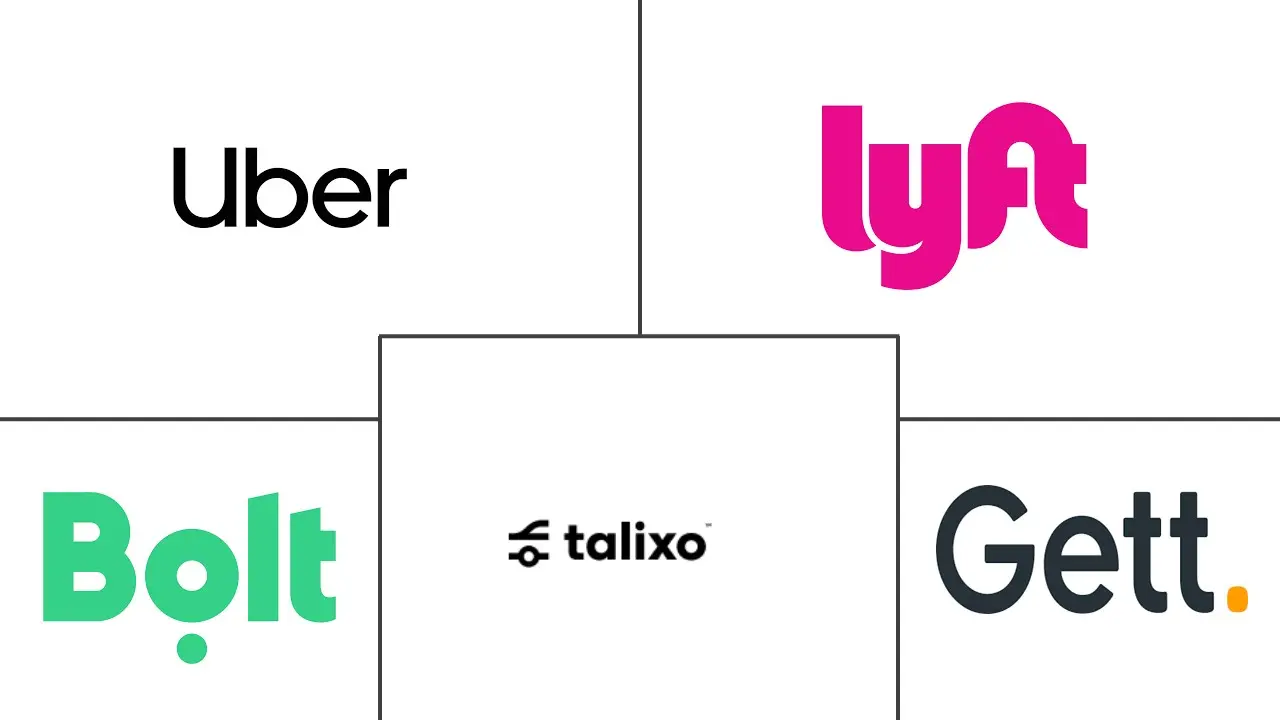Market Size of Middle-East and North Africa Taxi Industry

| Study Period | 2020 - 2029 |
| Base Year For Estimation | 2023 |
| Forecast Data Period | 2024 - 2029 |
| Historical Data Period | 2020 - 2022 |
| CAGR | 5.00 % |
| Market Concentration | Low |
Major Players
*Disclaimer: Major Players sorted in no particular order |
Middle East & North Africa Taxi Market Analysis
The Middle East and North African Taxi Markets are projected to record a CAGR of more than 5% during the forecast period.
The COVID-19 pandemic brought unprecedented disruptions to many industries, and the transportation industry is also among them. Due to COVID-19-associated norms implementation, such as social distancing, the ban on tourist places, etc., the Middle East and North Africa taxi market witnessed a hit in 2020. However, post-pandemic players are focusing on new technologies for the development of the taxi market in the region. For instance,
- April 2022: Mobileye unveiled its True Redundancy sensing system, a significant step toward the launch of its planned robotaxi services in Israel.
Owing to the increasing business opportunities in the region, business travelers and the growing tourism and religious travelers are driving the demand for taxis in the Middle East and North African region.
According to a report published by World Bank, the number of international tourists who visited the UAE in 2021 is estimated at 12 million people. The United Arab Emirates (UAE) launched several initiatives to promote the travel and tourism industry, including the Dubai Tourism Strategy 2020. Vast cultural heritage, connectivity with the world, developed infrastructure, and business tourism are attracting a diversified tourist base in some countries of the Middle East region.
Countries like Saudi Arabia, Egypt, UAE, etc., are the places international tourists most prefer in the region. The major taxi players and government are investing majorly in these countries to cater to growing demands. For instance,
- November 2022: The traffic authorities in the Kingdom of Saudi Arabia have launched a new digital driving authorization service for visitors who wish to drive in the country. The General Directorate of Public Security's new platform, Absher Business, launched under the country's Traffic Department, allows car rental companies to authorize state visitors to drive vehicles across a border number.
Middle East & North Africa Taxi Industry Segmentation
A taxi is a vehicle for hire with a driver used by a single passenger or a small group of passengers. A taxicab conveys passengers between locations of their choice.
The Middle East and North Africa Taxi Markets are segmented by booking type (online booking and offline booking), vehicle type (budget car and luxury car), service type (ride-hailing and ride-sharing), and by country (Egypt, Morocco, Qatar, United Arab Emirates, Saudi Arabia, Israel, and rest of Middle East and North Africa). The report offers the market size in value (USD billion) and forecasts for all the above segments.
| Booking Type | |
| Online Booking | |
| Offline Booking |
| Vehicle Type | |
| Budget Car | |
| Luxury Car |
| Service Type | |
| Ride Hailing | |
| Ride Sharing |
Middle-East and North Africa Taxi Market Size Summary
The Middle East and North Africa taxi market is experiencing a robust growth trajectory, driven by the region's burgeoning tourism and business travel sectors. The post-pandemic recovery has seen a significant shift towards the adoption of new technologies, such as Mobileye's True Redundancy sensing system for robotaxi services in Israel. The region's appeal as a tourist destination, particularly in countries like the UAE, Saudi Arabia, and Egypt, is bolstered by their developed infrastructure, cultural heritage, and strategic initiatives to promote tourism. This has led to increased demand for taxi services, with major players and governments investing heavily to cater to this growing market. The rise of online booking services has further transformed the industry, making it more accessible and convenient for users, thereby boosting revenue for taxi companies.
Saudi Arabia stands out as a key player in the region's taxi market, with significant investments in technology centers, entertainment venues, and infrastructure to support its growing population and tourism industry. The government's efforts to enhance taxi services, such as lifting the ban on women driving taxis and improving service quality, reflect a broader social and economic transformation. The market is characterized by fragmentation, with numerous players like Uber, Lyft, and Bolt Private competing for market share. Innovations such as self-driving electric taxis in Israel and fully electric taxis in Doha highlight the region's commitment to eco-friendly and advanced transportation solutions. These developments, coupled with strategic investments and regulatory support, are poised to drive the continued expansion of the taxi market in the Middle East and North Africa.
Middle-East and North Africa Taxi Market Size - Table of Contents
-
1. MARKET DYNAMICS
-
1.1 Market Drivers
-
1.2 Market Restraints
-
1.3 Porter's Five Forces Analysis
-
1.3.1 Bargaining Power of Suppliers
-
1.3.2 Bargaining Power of Buyers/Consumers
-
1.3.3 Threat of New Entrants
-
1.3.4 Threat of Substitute Products
-
1.3.5 Intensity of Competitive Rivalry
-
-
-
2. MARKET SEGMENTATION
-
2.1 Booking Type
-
2.1.1 Online Booking
-
2.1.2 Offline Booking
-
-
2.2 Vehicle Type
-
2.2.1 Budget Car
-
2.2.2 Luxury Car
-
-
2.3 Service Type
-
2.3.1 Ride Hailing
-
2.3.2 Ride Sharing
-
-
Middle-East and North Africa Taxi Market Size FAQs
What is the current Middle-East and North Africa Taxi Market size?
The Middle-East and North Africa Taxi Market is projected to register a CAGR of greater than 5% during the forecast period (2024-2029)
Who are the key players in Middle-East and North Africa Taxi Market?
Uber Technologies Inc., Lyft, Bolt Private, Talixo and Gett are the major companies operating in the Middle-East and North Africa Taxi Market.

